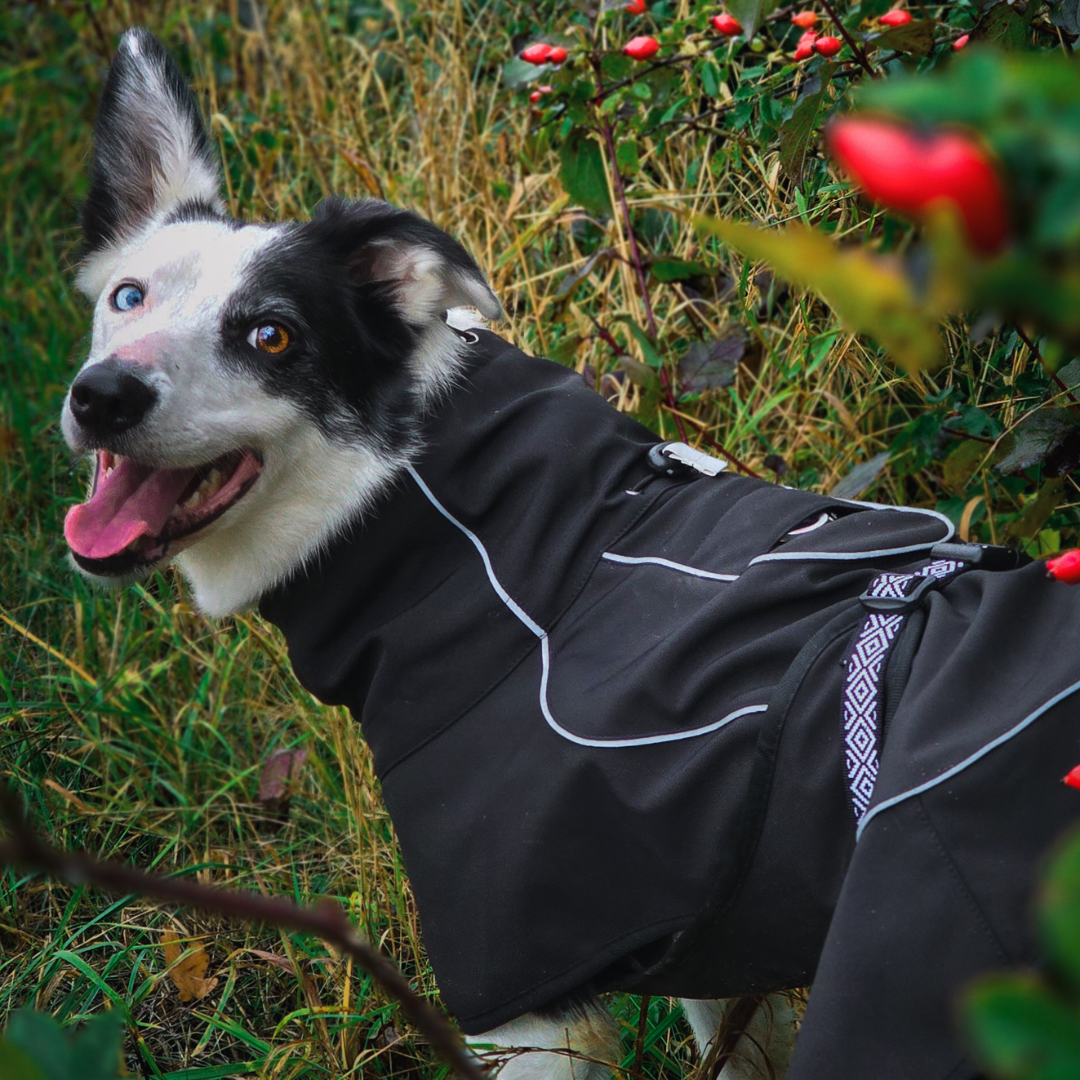
How to Keep Your Dog Warm and Dry (Without Overheating) in Our Dog Coats
Share
When the lovely British weather turns cold, wet and unpredictable, many dog parents reach for a dog coat to keep their dog(s) warm and dry. But while staying warm is important, there is also the risk of overheating if the wrong coat is used, or if it is left on too long!
In this short guide, we'll show you how to strike the right balance, what signs to look out for and why our dog coats are designed to keep your dog(s) warm without compromising on breathability.
Do All Dogs Need a Coat?
Not every dog will need a coat in autumn or winter. Factors that make coats especially useful are:
- Short haired breeds like whippets, greyhounds, staffies, viszlas
- small dogs who lose body heat quickly
- senior dogs
- slim breeds with little natural insulation
By contrast, breeds like huskies or malamutes often cope well without a coat.
Choosing the Right Dog Coat...
The best dog coat for our UK weather should balance warmth, waterproofing and breathability. Here is what to look out for:
- Waterproof outer shell
- Lightweight insulation
- Breathable lining
- Adjustable fit
- Easy fastenings
Our Rain Defender Dog Coat is designed with these essentials and will help your dog stay warm, dry, and most importantly comfortable and safe.
Here are some signs that your dog is cold:
- Shivering and trembling
- Tucking their tail close to their body
- Reluctance to walk or lifting paws off the ground for longer than usual
- Curling up tightly when resting outside
Signs your dog is overheating and uncomfortable in a dog coat:
- Excessive panting
- Relentlessness / agitation
- Trying to run or pull off the coat
- Damp fur inside the coat
If you spot any of these signs please remove the coat and let your dog cool down.
We believe that a dog coat should enhance walks, that's why every detail has been considered on the Neerdog Rain Defender Dog Coat. Designed around comfort, safety and practicality.





